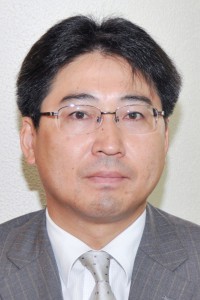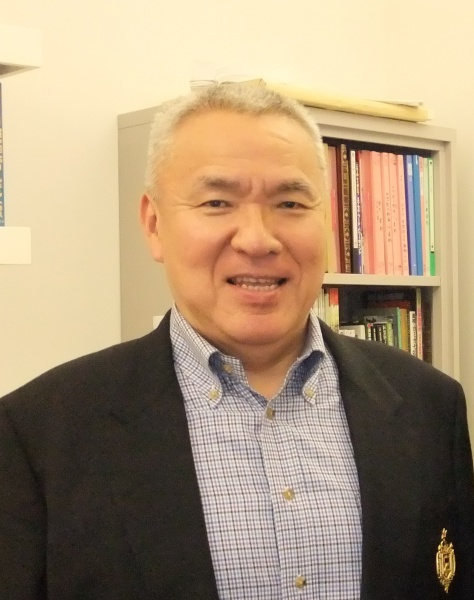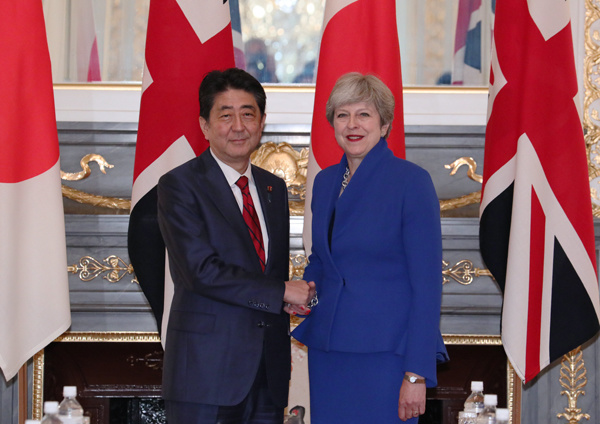The Confucius Institute in the One Belt, One Road Region
What Kind of Organization is the Confucius Institute?

Kawashima Shin, Professor, University of Tokyo
The Confucius Institute is an organization set up in foreign countries by China with the principal aims of teaching Chinese, propaganda, and fostering friendly relations. It was launched in 2004 during the administration of Hu Jintao and managed by the Hanban (Office of Chinese Language Council International), a section of the Ministry of Education (http://www.hanban.edu.cn). This Hanban is a national-level organization; in other words, it became the “National Hanban” at the outset of the Hu Jintao administration in 2002.
That this organization bears the name “Confucius” has no essential connection with any propagation of the teachings of Confucius or Confucianism. Initially, a perception arose that the then rapidly developing China was being misunderstood by the world, so the institute aimed to promote both Chinese language learning and the training of Chinese language teachers overseas, and through that use Chinese to increase the number of people who can understand China, create more positive attitudes to China, and achieve friendly relations. One might say that, in nurturing individuals who can directly take onboard China’s propaganda in Chinese, the institute plays a part in China’s propaganda policies.
Although the Confucius Institute was created “based on the experiences of countries such as the UK, France, Germany and Spain in promoting their languages to the world,” it takes a unique shape. Namely, unlike the cultural exchange organizations of the United States, Europe, and Japan, Confucius Institutes form agreements with overseas universities, becoming part of those universities, and sometimes handle Chinese language education as part of the official curriculum. In other words, instead of being based on national-level cultural exchange agreements or something similar, Confucius Institutes across the world are established through “independent” agreements with universities. For that reason, even in Japan the Ministry of Education, Culture, Sports, Science and Technology essentially has no involvement in the setting up of Confucius Institutes. That is a big difference to the activities of the Japan Foundation in China, which are governed by a cultural exchange agreement between Japan and China.
Expecting Freedom Outside China, But Imposing Restrictions at Home
China’s relations with the outside world are essentially unbalanced and lacking in reciprocity. China’s stance is that it does not envisage or accept others asking it for the same things it asks of them.
One could say that this extends to the Confucius Institute too. Although organizations such as the Goethe-Institut do have offices in China and engage in activities, those activities are bound by China’s domestic laws. Various permissions are necessary even to show a single film. By contrast, when China sets up Confucius Institutes in overseas countries, it uses the “free” environment of the other country and, if there are regulations in those countries, does not hesitate to criticize them. In this respect, developed nations with liberalized systems really are an excellent place for China to engage in some sort of activity.
Precisely for that reason, the Confucius Institutes were set up at first mainly in developed nations. At the end of 2017, there were 525 Confucius Institutes worldwide, and 1,113 Confucius Classrooms providing lessons without a specific physical location. These are spread across 146 countries of the world, while 330 of the over 500 Confucius Institutes are based in Europe and the United States. It is very obvious that they are centered on developed countries (http://www.hanban.edu.cn/confuciousinstitutes/node_10961.htm). China’s stance during the Hu Jintao administration was clear: to promote understanding of China in Europe and the United States as a base for influencing world public opinion while utilizing the freedom and openness of developed nations. At that time, Chinese society was angered by the harsh coverage of China in the European and American media. There was probably a hope that, if Confucius Institutes were set up in developed nations and people there learned Chinese, they would achieve understanding of China through the medium of Chinese, and “understand” China by themselves.
Changes in Policy Under Xi Jinping
To a degree, China has probably achieved results from these efforts. Particularly since the global financial crisis, the world economy has become reliant on China. At a time when people really think the age of China has come, in English-speaking countries at least, they have started to regret the “China threat theory.”
Yet, the nature of any original causal relationship between these changes and the results of the Confucius Institute’s activities is not clear, nor can the sense of wariness towards China be so easily dispelled. Meanwhile, on the Chinese side, during the period from the end of the Hu Jintao administration to the start of the Xi Jinping administration (2012), the nation has gradually become more confident. There seems to be a tendency to be less concerned than before about how foreign countries (i.e. developed countries) view China. Probably, this indicates not that China aims to become a developed country like European nations or the United States, but that China is pushing forwards more confidently with its own route to development.
The Xi Jinping administration has strengthened China’s external advance, while at the same time raised barriers and firewalls to people, goods and information entering the country. Even as it promotes things going out, it tries to suppress things coming in. Xi Jinping often uses the phrase “protector of free trade,” but this only means that it wants the outside world to follow free trade rules when China sends goods outwards. It doesn’t mean liberalization of China’s domestic market.
Criticism of the Confucius Institute and Further Cultural Penetration
China has strengthened its domestic restrictions on information and put in place a surveillance society. Meanwhile, the more it restricts the activities of overseas NGOs, the stronger suspicions will become that Confucius Institutes have become a base for such activities. Despite enthusiasm for studying Chinese, the spread of Confucius Institutes in developed countries will be seen as undesirable. Since these activities have progressed under the control of the Hanban and other Beijing bodies, another problem was that they could not react appropriately to local situations.
Yet, since the start of the Xi Jinping administration, China’s external propaganda activities have been reinforced, and it seems that a number of other methods have been adopted. It appears that these methods are being applied to liberal nations and regions in particular. First of all, in places in Canada such as Toronto, a Chinese group called Alpha has been engaged in political activity connected with issues such as the Nanking Incident and Comfort Women. This has developed into movements in the Toronto and Ontario City Councils to enact commemoration days for these. Meanwhile, in Australia controversies have arisen where Chinese students studying at local universities boycott the lessons of teachers who introduce material that goes against the position of the Chinese government. In this and other ways, Chinese cultural infiltration is getting stronger. As criticism of the Confucius Institute intensifies in developed nations, China’s external cultural policies seem to be looking for a new direction. Nevertheless, these actions are, on the face of it, “legal,” so in a sense both Canada and Australia may be struggling to deal with them.
The Opportunity That Is the One Belt, One Road
As this state of affairs continues, the Confucius Institute has found a new opportunity; and that is the One Belt, One Road policy initiated by Xi Jinping. The Confucius Institutes that have been set up in the One Belt, One Road region seem to have been assigned a new role, and unlike those in developed nations, they seem to be expanding their work relatively without problem.
To be specific: firstly, the Confucius Institutes are training many local Chinese speakers and supplying them to Chinese companies expanding into those regions. Since salaries from Chinese companies are often higher than from local companies, learning Chinese is an important opportunity for local students. Some of them also become Chinese language teachers.
Secondly, since the Confucius Institutes join agreements of cooperation with Chinese universities, those universities send teachers and volunteer students who get the chance to learn the local language. This is a trend that is not necessarily seen in Confucius Institutes in developed nations. By sending out teachers and students, the Confucius Institutes can maintain two-way relationships, and it gives China an opportunity to develop human resources with ability in the various languages of the One Belt, One Road region. These universities in China also give local students opportunities for short-term study, and even chances to take up jobs at Chinese companies.
This new direction for the Confucius Institute is different to precedents in developed countries and corresponds to the national project that is the One Belt, One Road. Of course, this model could not be sustained if the work of Chinese companies slowed down or if funds related to the One Belt, One Road were cut.
Confucius Institutes in Morocco
Let’s take Morocco as one example. Right now, in the northern district of Tangier, Morocco, a China-supported plan to build an industrial estate called Tangier Tech City is being implemented. The main actors in this are Sichuan Province and a company called Haite Group. Additionally, the number of Chinese companies in Morocco is gradually increasing via bridge construction and other activities. Still, since Morocco is governed stably by its king and the technology and has industrial capacity needed for infrastructure construction, it seems that China respects Morocco’s ownership. According to China’s One Belt, One Road plan, first the economic relationship is built; political and military matters come later. One can appreciate why, in regions at the forefront of this plan like Morocco, economics comes first without any hint of politics or military matters.
China has also taken into account how Morocco maintained a relatively stable government during the Arab Spring. It has located an Export–Import Bank of the Republic of China (an organization that implements financial aspects of the One Belt, One Road plan) in the capital of Rabat, seeking to create a base in French-speaking Africa. Previously, the only branch of the bank was in Johannesburg, South Africa, which mainly had jurisdiction over English-speaking parts of Africa. From this, one can see the importance China places on Morocco.
Three Confucius Institutes have been set up in Morocco. This is a list of their locations and the Chinese domestic universities with which they are partnered: Mohammed V-Agdal University Confucius Institute (Rabat, Beijing International Studies University); University of Hassan II Confucius Institute (Casablanca, Shanghai International Studies University); Abdelmalek Essaâdi University (Tangier, Jiangxi Science and Technology Normal University).
In March 2018, this writer visited the Confucius Institutes at Mohammed V-Agdal University and University of Hassan II. Both these Confucius Institutes are training large numbers of people with Chinese skills. Meanwhile, at the University of Hassan II the Chinese side is effectively managing all the Chinese language study, and sending not only short-term students to Shanghai International Studies University, but post-graduate students too. Some will soon get as far as receiving their doctorate. When these students return to Morocco it is likely that they will be employed as teachers; and China needs human resources that can provide Chinese language teaching. At the same time, teachers and postgraduate students of Arabic (the main local language) from the Shanghai International Studies University are based there as volunteers. A prize called the Ibn Battuta Cup has also been set up, for which students compete on language ability and knowledge. Ibn Battuta was a traveler from Tangier who visited Guangzhou and Beijing in China in the fourteenth century, and one of the few individuals mentioned by Xi Jinping during his speeches on the One Belt, One Road.
It seems that China’s vision for the future is of large numbers of students learning Chinese from native speakers, studying in Shanghai for short periods while funded by China, then taking jobs with Chinese companies and getting a better salary. From the Chinese perspective too, it seems the project is proceeding relatively without incident as the country develops human resources who can speak Arabic. Needless to say, China needs these people who come through the Morocco Confucius Institutes, and who can understand the situation in China and the intentions behind its policies.
Confucius Institutes in Kyrgyzstan
Central Asia is seen as an extremely important region for the One Belt, One Road plan. For the continental “One Belt” element in particular, one might say that Central Asia is the center of all connections. And when one considers the issue from the perspective of the Confucius Institute, the country of Kyrgyzstan stands out. According to one report issued by American think-tank the Center for Global Development (“Examining the Debt Implications of the Belt and Road Initiative from a Policy Perspective” by John Hurley, Scott Morris and Gailyn Portelance), the amount of money loaned by China exceeds the ability to repay, and countries are facing serious financial problems (including Kyrgyzstan). Even though Kyrgyzstan is already highly reliant on China in this way, it is strengthening cultural links in particular through the Confucius Institute.
In Kyrgyzstan, there are four Confucius Institutes and twelve Confucius Classrooms. The Confucius Institutes are Bishkek Humanities University Confucius Institute (Xinjiang University), Kyrgyz National University Confucius Institute (Xinjiang Normal University), Jalalabad State University Confucius Institute (Xinjiang University) and Osh State University (Xinjiang University). One can see that they have been matched in particular with universities in the Xinjiang Uyghur Autonomous Region of China. An interesting thing is that, of the twelve Confucius Classrooms seven are at high schools. It is well known that within the language-learning world, special emphasis is placed on high schools. One of these Confucius Classrooms was set up in 2011 at the Bishkek No. 69 High School in the Kyrgyz capital, and is notable for its partnership with the Beijing Foreign Studies University. None of the other high schools has a Chinese partner university, so this high school must be strategically important. Furthermore, at these Confucius Institutes and Confucius Classrooms, emphasis is placed on understanding not just Chinese language but Chinese culture, particularly through instruction in Chinese martial arts.
There are four Confucius Institutes in Kazakhstan, two in Tajikistan, and none in Turkmenistan. In light of this, one can see that Kyrgyzstan has an unusually large number of Confucius Institutes and Confucius Classrooms. From Xinjiang University’s website one can see that it is recruiting Chinese language teachers and Confucius Institute directors to send to Kyrgyzstan. The directors must be assistant professors or higher at the university and serve for one year. The Chinese language teachers must have experience teaching outside the university in high schools, middle schools, and elementary schools, and serve for two years. The director must know Russian or English, while the Chinese language teachers must have ability in English. More than anything else, they must be “politically appropriate.” In addition, volunteer Chinese language instructors are recruited from among university graduates and post-graduate students. Due to the problems with the Uyghur ethnic group, particular attention is paid to “politics” regarding both teachers and students.
As well as Kyrgyzstan, there are other countries and regions where an unusual number of Confucius Institutes and Confucius Classrooms have been set up, such as South Korea and Thailand. And if one counts the number of institutes in Japan, it is also relatively high.
The Social Control System Being Applied in Kenya
The Confucius Institutes mentioned here, and especially those in the One Belt, One Road region, for the moment appear extremely “modest” and “simply-produced.” And in the long term, there is probably some meaning behind a policy of this kind. It is worth noting how China is spending large sums of money on this understated project, but at the same time China’s methods are not particularly unusual. Developed countries also implement similar policies. Going forwards, if these Confucius Institutes abandon their “modesty” and strengthen their propaganda aims, the same things that have happened in developed countries may happen again
China is also testing new propaganda policies that differ from the “modesty” of the Confucius Institutes and other organizations in the One Belt, One Road region. These are very conspicuous in Africa as a whole and Kenya in particular. The Star Times corporation is already expanding its terrestrial digital television broadcasting and other media infrastructure facilities in various regions of Africa. In 2012, CCTV (China Central Television) set up its first overseas bureau in Kenya and is now broadcasting Africa-focused television programs from this base. These broadcasts are mainly in English and typically convey African news to African viewers. It seems that they use local newscasters rather than Chinese ones; and for the moment, it is not the case that they only provide material favorable to China.
In addition, it is worth noting how Kenya has introduced Chinese social control and electronic payment systems. In Kenya, there have been a series of riots associated with elections, and public order is deteriorating. The country has introduced security cameras, facial recognition systems, and Chinese social control systems via cellphones and other technology. To an extent it seems this is welcomed by society, but at the same time these are extremely convenient tools for the authorities. In China, these systems are being used in some major cities, while extremely advanced versions are also being employed in the Xinjiang Uyghur Autonomous Region. By launching numerous satellites and setting up ground-based devices to control them, China has made it possible to extend communications infrastructure throughout the One Belt, One Road region and use that to provide various services. The GPS system that works via Huawei telephones, and which is used in social control systems, is one example.
This “experiment” that is taking place in Kenya may only be business for Chinese companies. Nevertheless, one can’t deny that from the Chinese perspective it is technologically possible to acquire information using television and social control systems. It can also eliminate information that harms Chinese interests and spread information that is advantageous.
Developing Human Resources and Creating Infrastructure
As mentioned above, China is trying out various new things in the One Belt, One Road region. The Confucius Institutes in this region function to develop local Chinese-speaking human resources, provide Chinese-speaking human resources to Chinese companies expanding globally, and also develop human resources in China with ability in various languages. In the long-run, one might expect local Chinese-speaking human resources to be receptive to Chinese-language propaganda from China and to have a friendly attitude towards China.
Meanwhile, by supplying communications and media infrastructure, China is beginning to have a strong ability to both control and supply information in the One Belt, One Road region; and it is bolstering this latent ability. For the moment, infrastructure is being supplied only in a limited number of regions, and Kenya is the only experimental area. In the future however, once that infrastructure is sufficiently extensive and enough experiments have been conducted, one can expect China to use it for external propaganda.
Some of the Confucius Institutes in these regions began before the One Belt, One Road policy was first put forward in 2013. It is not the case that all this started as part of the One Belt, One Road concept. Rather, various things have simply been explained as part of the One Belt, One Road concept after the fact. Nevertheless, five years have passed since the concept was first put forward, and already it has gone further that just simple explanation; it is in the process of becoming reality. Therefore, even though the policy has various forms, we cannot ignore how it concerns real economic advantage and disadvantage while being tied to a specific policy direction involving various areas such as propaganda, communications, and cultural exchange.
Translated from “Ittai Ichiro Kukan no Koshi Gakuin (The Confucius Institute in the One Belt, One Road Region),” Chuokoron, July 2018, pp. 65-73. (Courtesy of Chuo Koron Shinsha) [July 2018]
Keywords
- Confucius Institute
- Hu Jintao
- China threat theory
- Office of Chinese Language Council International
- Xi Jinping
- One Belt, One Road
- protector of free trade
- Debt Implications of the Belt and Road Initiative




